 |
 |
 |
| |
REMDESIVIR VERSUS STANDARD OF CARE FOR SEVERE COVID-19
|
| |
| |
CROI 2021 Mach 6-10 Reported by Jules Levin
Susan Olender1, Theresa L. Walunas2, Esteban Martinez3, Marta Boffito4, Katherine K. Perez5, Antonella Castagna6, Su Wang7, Parag Goyal8, Diego Ripamonti9, Jose I. Bernardino10, Richard H. Haubrich11, Anand P. Chokkalingam11, George Wu11, Helena Diaz-Cuervo12, Diana Brainard11
1Columbia University, New York, NY, USA, 2Northwestern University, Chicago, IL,
USA, 3Hospital Clinic of Barcelona, Barcelona, Spain, 4Chelsea and Westminster Hospital, London, UK, 5Houston Methodist Research Institute, Houston, TX, USA, 6Vita-Salute San Raffaele University, Milan, Italy, 7Saint Barnabas Medical Center, Livingston, USA, 8Weill Cornell Medicine, New York, NY, USA, 9ASST Papa Giovanni XXIII, Bergamo, Italy, 10Hospital La Paz Institute for Health Research, Madrid, Spain, 11Gilead Sciences, Inc, Foster City, CA, USA, 12Gilead Sciences, Madrid, Spain
Background: Remdesivir (RDV), a direct-acting nucleotide pro-drug inhibitor of viral RNA-dependent RNA polymerases, was approved by the FDA for the treatment of hospitalized patients (pts) with COVID-19 infection and has been shown to shorten time to recovery and improve clinical outcomes in randomized clinical trials. We present the final Day 28 (D28) analysis of RDV vs standard of care (SOC) (interim Day 14 [D14] analysis published [Olender et al. Clin Infect Dis 2020]).
Methods: Final comparative analysis from two studies: a prospective phase 3, randomized study of RDV (RDV cohort) and a real-world retrospective cohort study of SOC (non-RDV cohort). Both studies enrolled pts with SARS-CoV-2 infection confirmed by polymerase chain reaction, who had oxygen saturation ≤94% on room air or required supplemental oxygen and had pulmonary infiltrates. Pts in the RDV cohort were randomized 1:1 to receive IV RDV for 5 or 10 days (200 mg on Day 1 followed by 100 mg/day on Days 2–5 or 2–10), plus SOC; the two randomized dose-groups were combined for analysis. Pts in the non-RDV cohort received SOC as determined by local treatment practices (excluding RDV). Analysis populations were balanced using propensity score (PS) matching. The coprimary endpoints were D14 clinical recovery (determined using a 7-point ordinal scale) and D28 all-cause mortality. Factors associated with D28 mortality were assessed using a multivariable logistic regression model.
Results: After PS matching, baseline characteristics were generally similar in the RDV and non-RDV cohorts; median age 61 years, 63% male, 42% obese, 12% Black, 71% no/low-flow oxygen use, 25% high-flow oxygen, 3% ventilated. Pts in the RDV cohort had significantly higher D14 clinical recovery rates (65% vs 57%) and significantly lower D28 mortality rates (12% vs 16%) compared with the non-RDV cohort (Table). In the multivariable analysis, in addition to RDV use, a lower risk of death at D28 was associated with: younger age; being female; being White (versus being Black/African American); receiving an HIV protease inhibitor prior to baseline; not having cardiovascular disease or COPD; more days of symptoms prior to baseline; and being on room air or low-flow oxygen at baseline (versus being on invasive mechanical ventilation).
Conclusion: RDV was associated with significantly higher rates of clinical recovery at Day 14 and lower Day 28 mortality compared with SOC in hospitalized pts with severe SARS-CoV-2 infection.
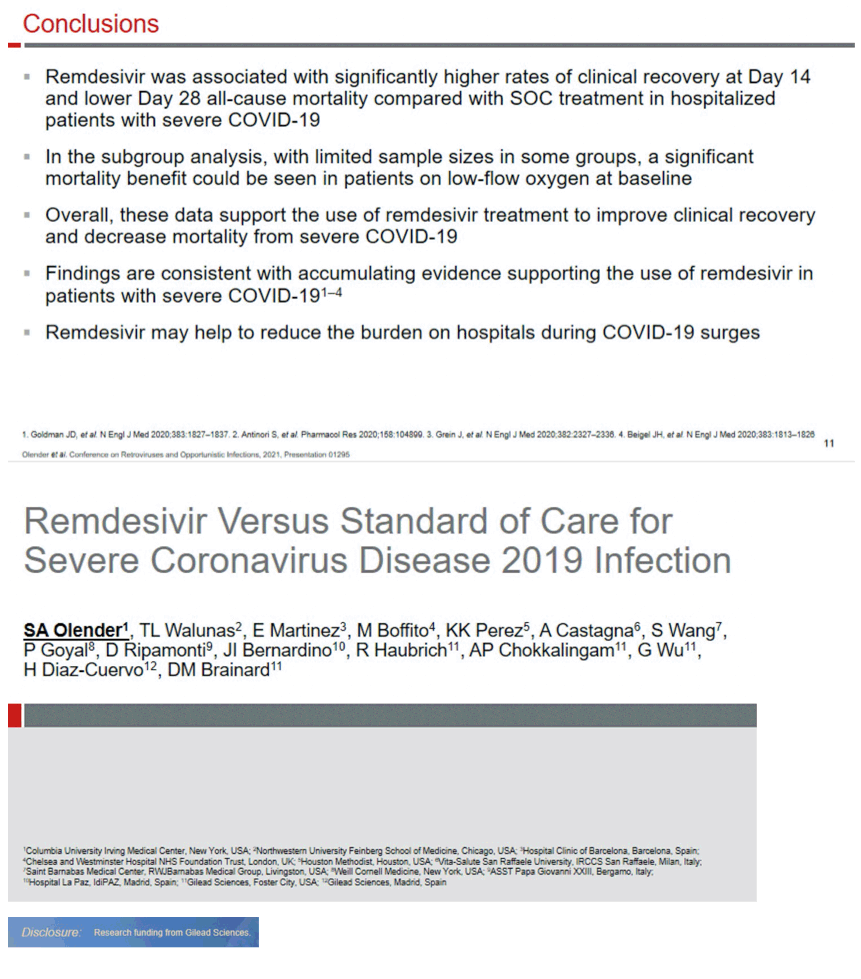
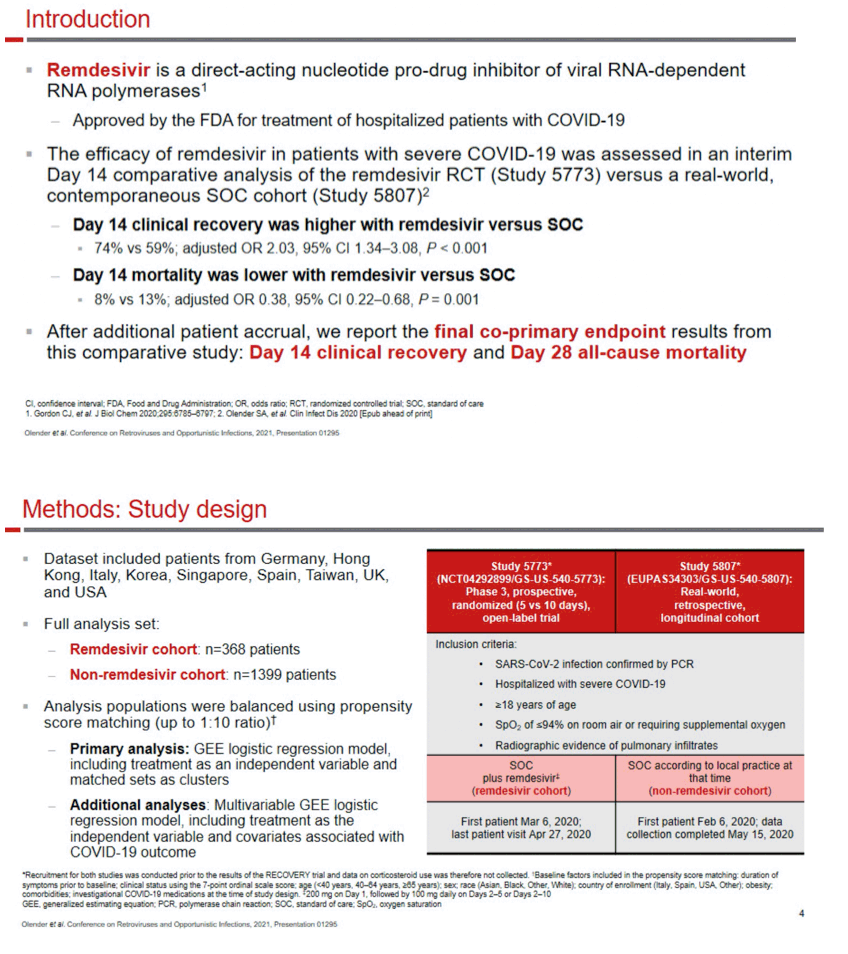
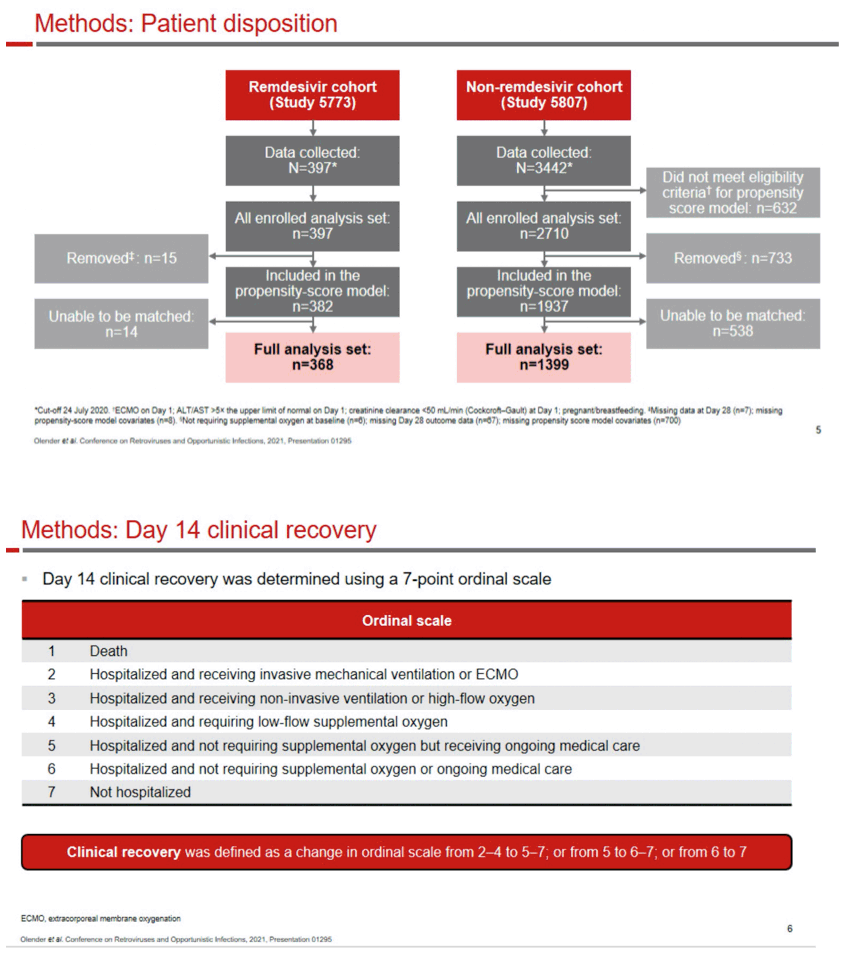
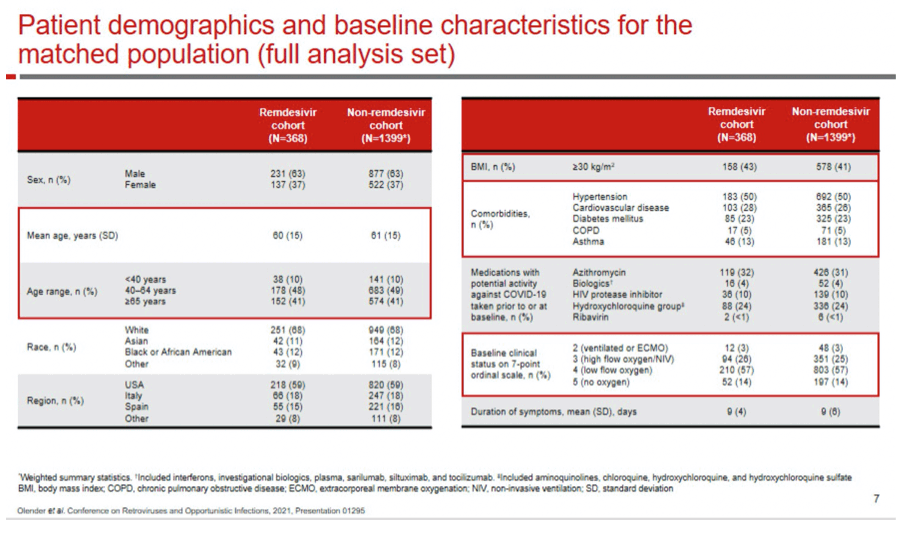
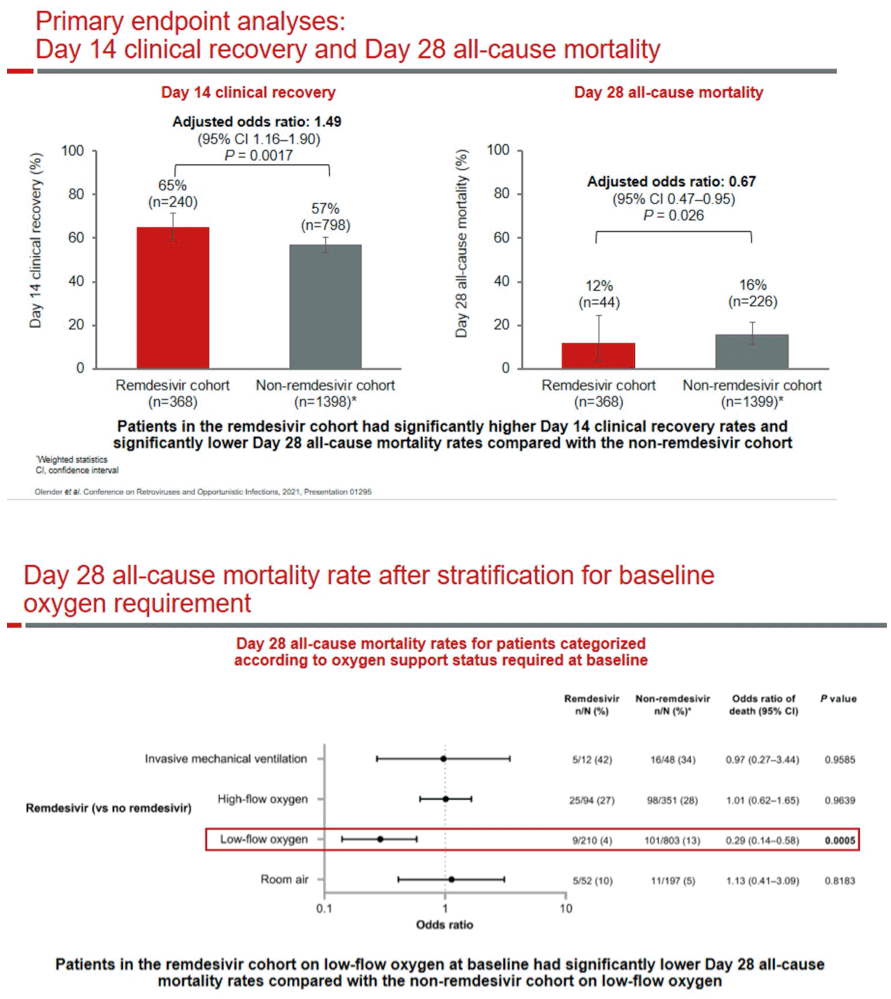
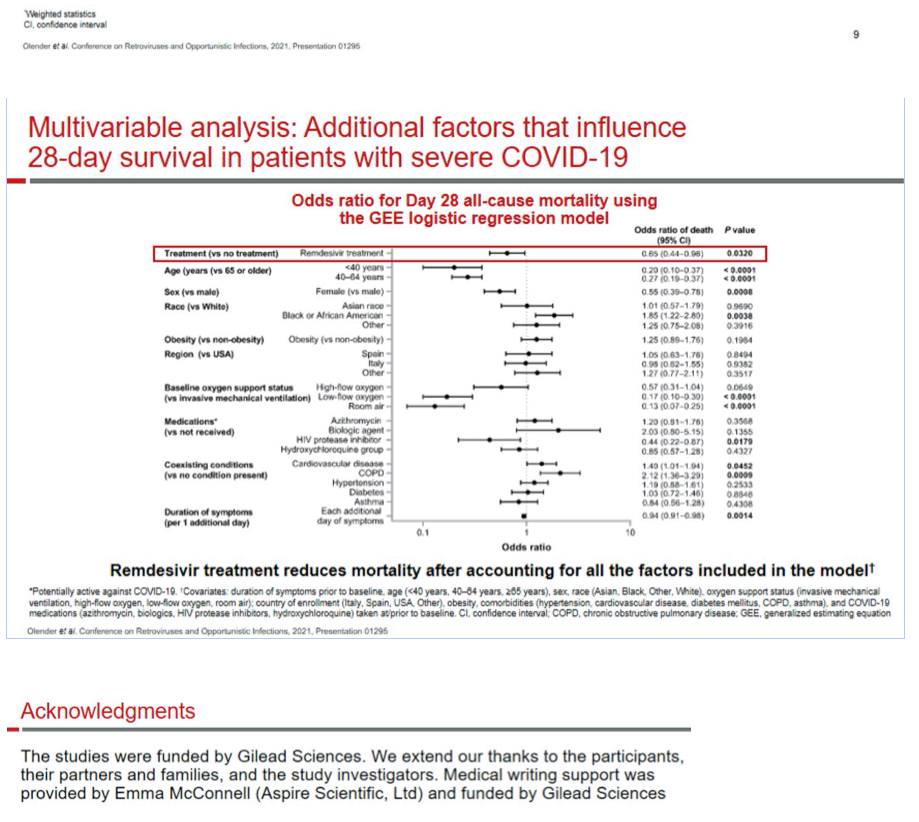
|
| |
|
 |
 |
|
|